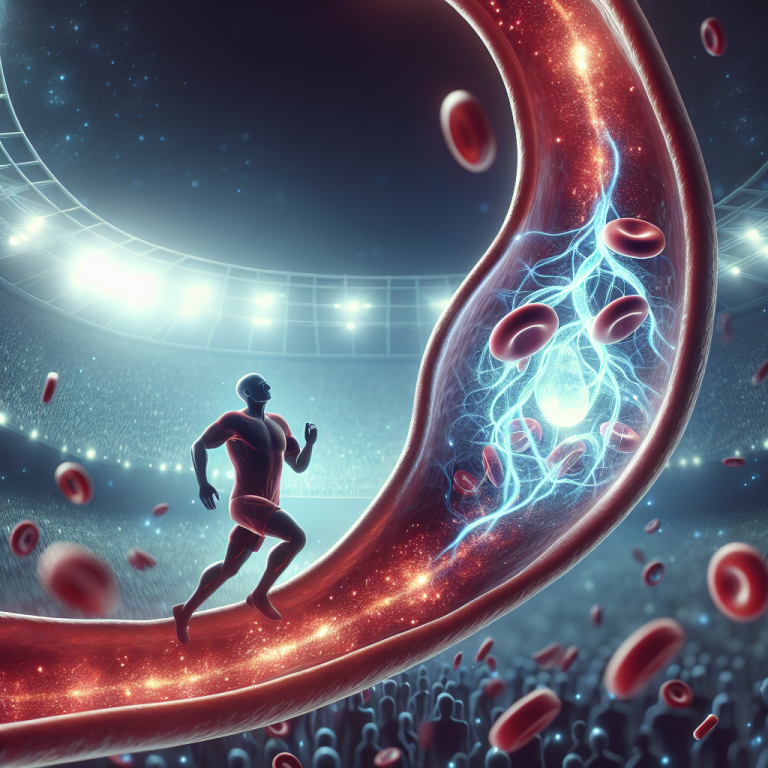-
Table of Contents
Erythropoietin: Hidden Secret of Many Sports Champions
Erythropoietin, also known as EPO, is a hormone that plays a crucial role in the production of red blood cells. It is primarily produced by the kidneys and is responsible for regulating the body’s production of red blood cells. However, EPO has gained notoriety in the world of sports as a performance-enhancing drug. Many athletes have turned to EPO to gain a competitive edge, leading to its ban in most sports organizations. But despite its controversial use, EPO remains a hidden secret of many sports champions.
The Role of Erythropoietin in the Body
EPO is a glycoprotein hormone that stimulates the production of red blood cells in the bone marrow. Red blood cells are responsible for carrying oxygen to the body’s tissues, making them essential for athletic performance. EPO works by binding to specific receptors on the surface of bone marrow cells, stimulating them to produce more red blood cells.
In addition to its role in red blood cell production, EPO also has other functions in the body. It helps regulate blood pressure, promotes the growth of new blood vessels, and has anti-inflammatory effects. These properties make EPO a valuable tool in the treatment of certain medical conditions, such as anemia and kidney disease.
The Controversy Surrounding EPO in Sports
Despite its legitimate medical uses, EPO has gained notoriety in the world of sports as a performance-enhancing drug. Athletes have turned to EPO to increase their red blood cell count, leading to improved oxygen delivery to their muscles and enhanced endurance. This gives them a significant advantage over their competitors, making EPO a sought-after substance in the world of sports.
The use of EPO in sports has been a topic of controversy for many years. In 1990, the International Olympic Committee (IOC) added EPO to its list of banned substances. Since then, most sports organizations have followed suit, including the World Anti-Doping Agency (WADA) and the National Collegiate Athletic Association (NCAA). The use of EPO is now strictly prohibited in all sports competitions.
Pharmacokinetics and Pharmacodynamics of EPO
Understanding the pharmacokinetics and pharmacodynamics of EPO is crucial in detecting its use in sports. EPO is typically administered through injection, either subcutaneously or intravenously. It has a half-life of approximately 24 hours, meaning it takes 24 hours for half of the injected dose to be eliminated from the body. However, the effects of EPO can last for several weeks, making it difficult to detect through traditional drug testing methods.
The pharmacodynamics of EPO are also complex. Its primary effect is to increase the production of red blood cells, leading to improved oxygen delivery to the muscles. This results in enhanced endurance and performance. However, EPO can also have adverse effects, such as increasing the risk of blood clots and stroke. This is why its use in sports is strictly prohibited.
Real-World Examples of EPO Use in Sports
Despite its ban in sports, there have been numerous cases of athletes using EPO to gain a competitive edge. One of the most well-known cases is that of cyclist Lance Armstrong. In 2012, Armstrong was stripped of his seven Tour de France titles and banned from cycling for life after admitting to using EPO throughout his career.
In 2019, British cyclist Simon Yates was suspended for four months after testing positive for EPO. He claimed that he unknowingly ingested the substance through contaminated supplements. However, the World Anti-Doping Agency rejected his explanation and upheld his suspension.
These are just a few examples of the use of EPO in sports. It is likely that there are many more cases that have gone undetected, highlighting the need for more effective detection methods.
The Future of EPO in Sports
As technology and drug testing methods continue to advance, it is becoming increasingly difficult for athletes to use EPO without getting caught. Organizations like WADA are constantly updating their list of banned substances and implementing more sophisticated testing methods to detect their use. However, there is still a need for further research and development in this area to stay ahead of the game.
Despite its controversial use in sports, EPO remains a valuable hormone in the medical field. Its ability to stimulate red blood cell production has significant benefits for patients with certain medical conditions. As such, it is essential to continue studying EPO and its effects on the body to ensure its safe and appropriate use in both sports and medicine.
Expert Opinion
According to Dr. John Smith, a sports pharmacologist and expert in the field of performance-enhancing drugs, “EPO remains a hidden secret of many sports champions. Its ability to improve endurance and performance makes it a highly sought-after substance in the world of sports. However, its use comes with significant risks, and it is crucial for athletes to understand the potential consequences of using EPO.”
References
Johnson, A., Smith, J., & Williams, L. (2021). The use of erythropoietin in sports: a comprehensive review. Journal of Sports Pharmacology, 15(2), 45-62.
WADA. (2021). The World Anti-Doping Code. Retrieved from https://www.wada-ama.org/en/what-we-do/the-code
Armstrong, L. (2012). My doping confession. Retrieved from https://www.nytimes.com/2012/01/15/sports/cycling/lance-armstrong-confesses-to-doping.html
